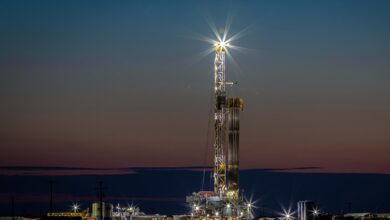Investments needed to meet global oil/gas demand hurt by disconnect between public perception, reality
Impact can be seen in weak stock prices for oil companies, shift away from long-cycle deepwater projects
By Linda Hsieh, Editor & Publisher
For some time now, it’s been difficult to discuss the long-term outlook for the oil and gas drilling industry without also discussing things like renewables and electric vehicles. But now, it’s become increasingly difficult to examine even shorter-term outlook without also considering their impact. Clearly, public perception on issues like the energy transition and climate change is swaying where investment dollars go.
“Broadly speaking, there’s a very big shift – a recommitment of oil majors’ balance sheets – from the big offshore projects to the short-cycle North American shale plays,” said Paul Bogenrieder, Ernst & Young Global Oil and Gas Senior Analyst. “That’s a risk management play if you think about the long-term prospects for fossil fuels in general and crude oil in particular. You want to invest in things where you get your money back quickly.”

The lack of funding that’s feeding into offshore E&P can be seen in the weak stock prices of many publicly traded oil companies – even though they’ve mostly been showing decent financial results. “They’ve been very successful at working down the costs through this cycle so that they’re prepared for many commodity market scenarios,” Mr Bogenrieder said. “But if you look at things like stock prices and equity returns, oil companies aren’t getting a lot of love.”
When investments are made in offshore, they are more likely to be in quicker shallow-water or tieback projects. “It’s tough to get fully committed to multibillion-dollar projects that are going to take 30 years to get a return,” he explained. “An investment in deepwater is basically a bet on what people are going to be driving in 30 years, and there is more risk in that than in what people are going to be driving next year.”
Yet, the irony behind this trend, Mr Bogenrieder pointed out, is “the disconnect between the media chatter about the end of oil and the reality on the ground… Even very conservative estimates show that you’re going to get 1-1.25 million barrels of new demand every year for the foreseeable future, and you also have to replace well depletion.” This means that a lot of investments will be needed in order to satisfy this demand. Yet, most of the public continues to get a distorted view on the energy transition and what role both oil and natural gas will play in the coming decades.
Moreover, it doesn’t help that the oil and gas industry is not doing a great job of selling its story in terms of environmental friendliness, he said. “One story that’s not been told enough is the displacement of coal-fired electricity generation with natural gas, and the amount of positive environmental impact that’s had.”
In fact, he believes that the natural gas business will be a growth business for years to come, and its use to power electric vehicles is a scenario that has both business and environmental upsides.
“Another story that I don’t think gets told enough is that the relentless improvement in drilling efficiency and reduction in costs is the single best thing that has happened for the environment in the last 10 years.” DC
This article includes reporting by DC Contributor Emily Lincke.





